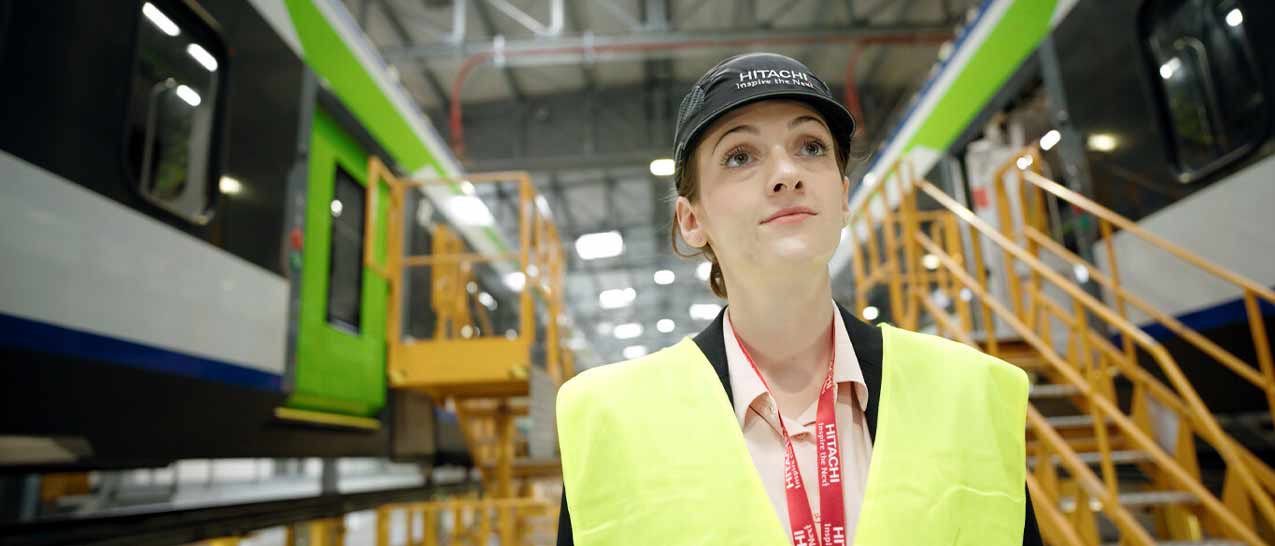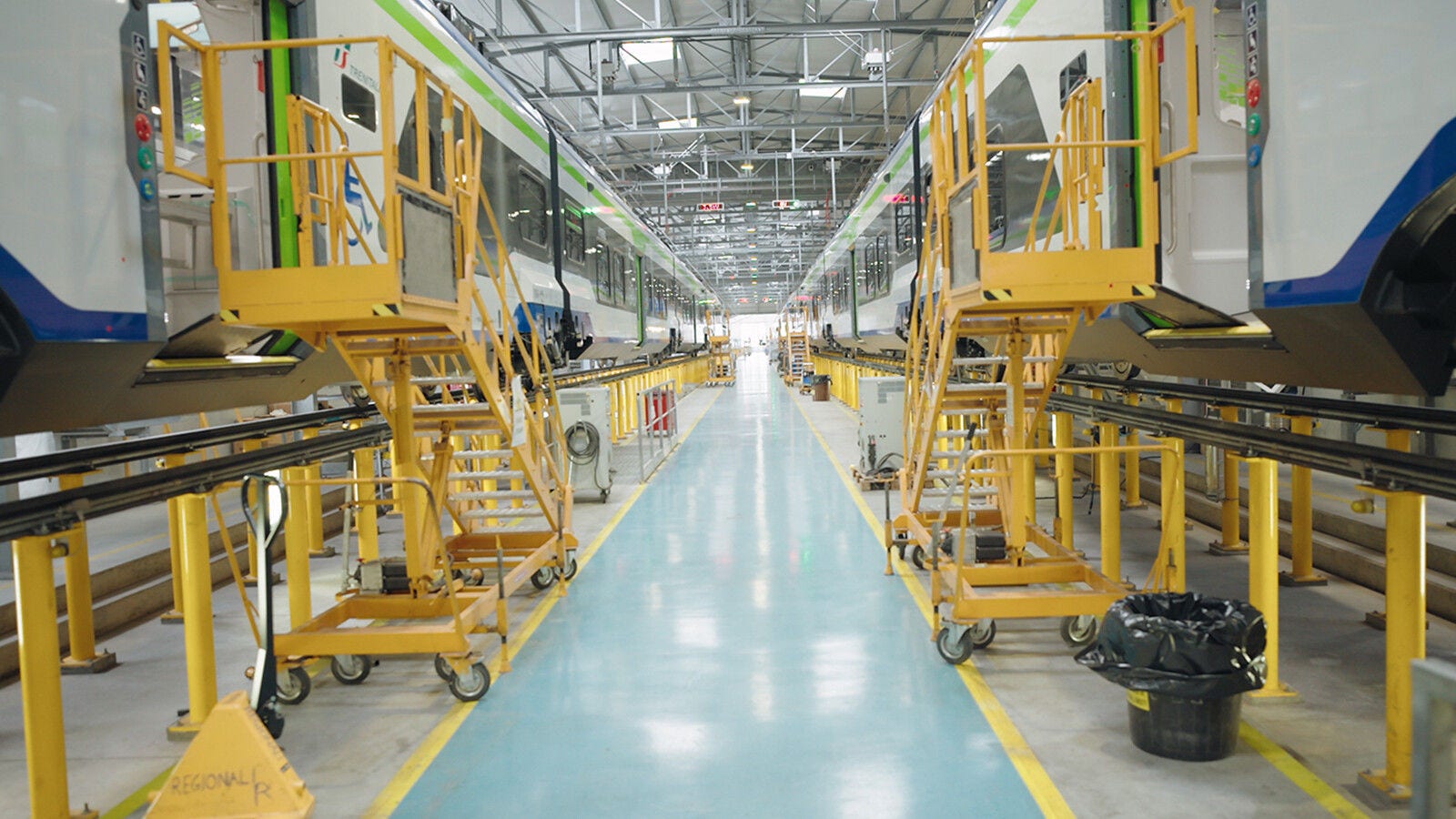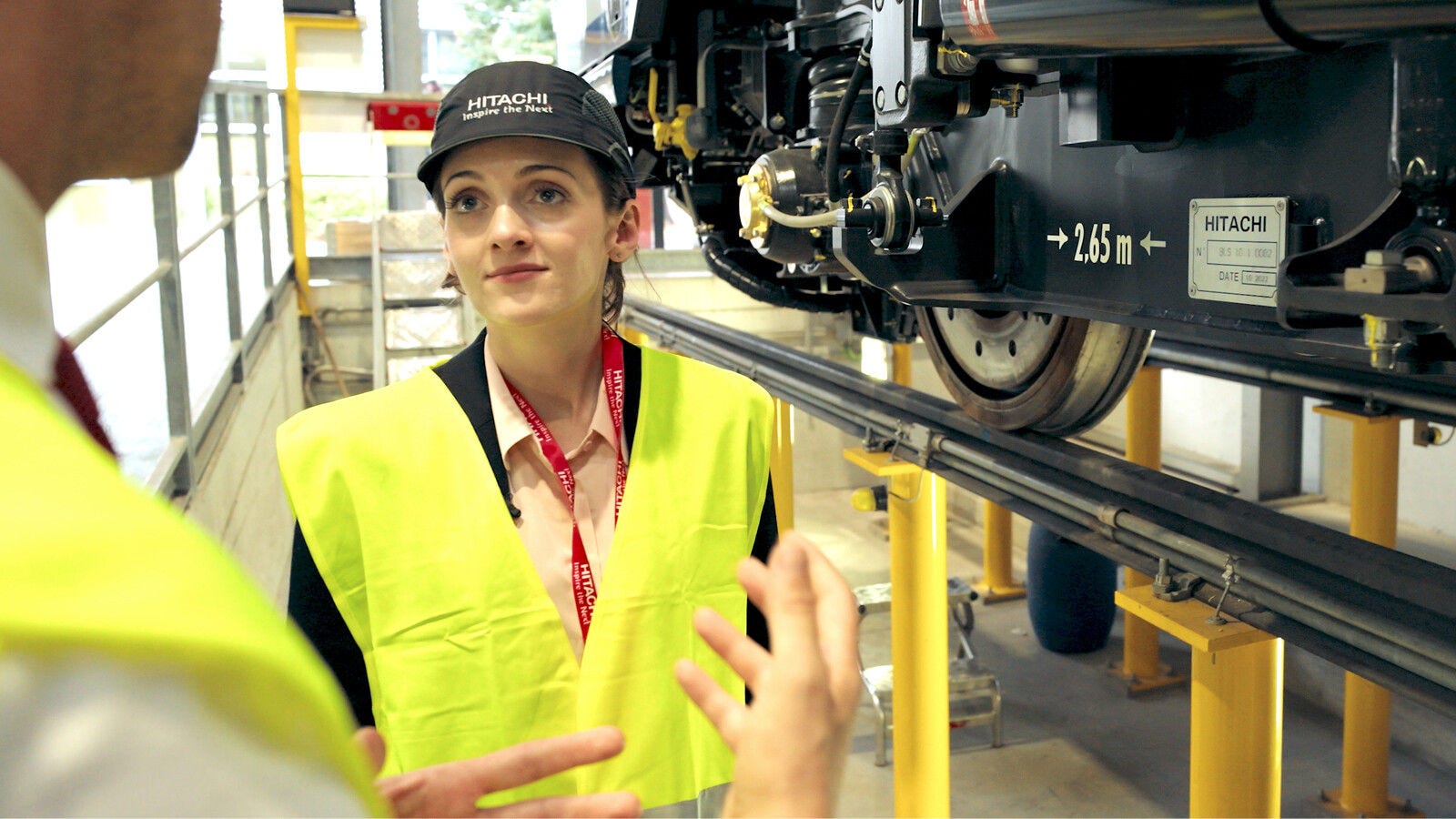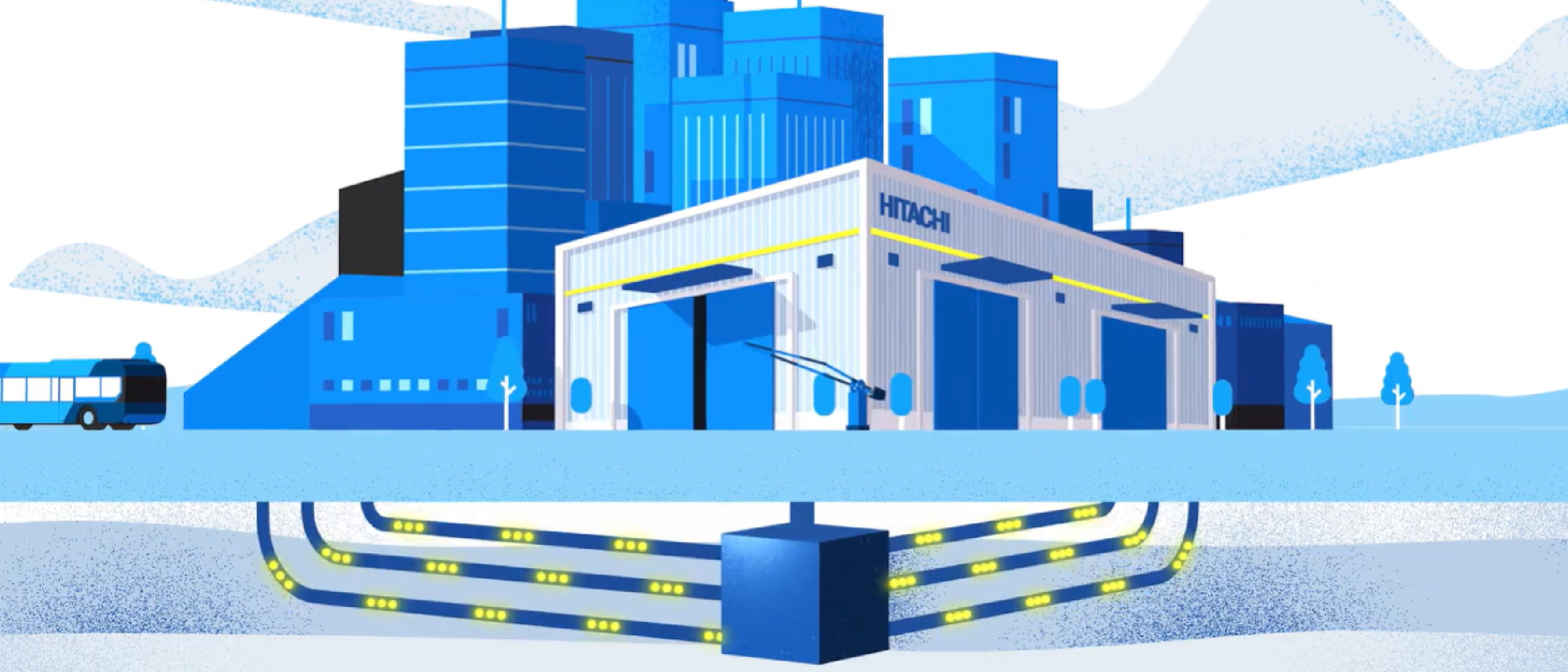

Four big questions with Heather Gray
In this new series of interviews for our Hitachi Possible campaign, we go behind the scenes with Hitachi Rail Project Manager Heather Gray.
Heather studied sustainable development and geopolitics and joined Hitachi Rail in 2020 as a Graduate Project Manager after starting her career in Consulting. Her interest lies in understanding how we can integrate sustainability in our businesses to drive commercial value. She also contributes as a project lead for Hitachi's Voice of Youth, which is a cross-business unit and cross-regional employee led initiative focused on the development and implementation of grassroots sustainability initiatives.
How does it feel to be helping to accelerate the green transition?
It feels rewarding and at the same time a lot of responsibility! Particularly in a business like Hitachi Rail where you have the opportunity to make a tangible difference, not just through reducing carbon, but also improving things like air quality, noise reduction and passenger comfort.
What we are trying to do is work with the best knowledge, expertise and talent in the business to bring a real difference to the table now with the technology we are developing, rather than just assuming future fixes will come along. By doing this, each day we're making those incremental steps towards a difference. And for me, that's the biggest thing, because sustainability and net zero aren't going to be achieved in one fell swoop, it will be a cumulative process involving lots of people, collaboration and solutions.

Can you outline how Hitachi is contributing to the ambition to make net zero possible?
From a Hitachi Rail perspective, we are using technology to make our trains greener - with new design builds powered by state-of-the-art battery technology, as well as the connected opportunity to retrofit existing train fleets. The bigger picture here is Hitachi's overall ability to manage every part of the train's lifecycle, from concept development and design all the way through to manufacturing and maintenance cycles to disposal.
From a supply chain point of view, it's about how we work to share that sustainability value - which is an active workstream through our procurement function. We're implementing the roll-out of (sustainability rating platform) EcoVadis and we're proud to have achieved a Platinum scorecard which puts us in the top 1% of mobility companies.
There's also the maintenance element where we're looking at the carbon emissions generated through our maintenance activity. We're in the early development stage but it's absolutely clear that creating more streamlined and efficient processes will enable us to reduce our carbon emissions, reduce waste and allow us to improve upon those metrics over time.
As part of the Hitachi Group we can also tap into the Group's strong synergies in other areas, for example, by working with Hitachi Energy. Our combined efforts means that we can provide a battery train with an efficient charging solution. Our aim is to be a one-stop-shop to enable these kind of technology solutions and also help change the way we sell them, since traditional sales models may no longer work in the future.
The more we combine with other parts and people of Hitachi, the more we can offer and contribute towards our net zero goals.
What do we need to do now to make the green transition a reality?
Collaboration with others and learning from them is key. For example, we need to learn from regions that might be further ahead than we are. At the moment we're actively looking at both legislation and customer requirements in regions that we operate in, or are trying to break into, so we can start to develop products, metrics and solutions that can put us a few years ahead of where we are today.
For example, if we're analysing sustainability requirements in Europe, we need to be looking to the Scandinavian countries, who are doing incredibly well with their decarbonisation efforts, to understand what standards and legislation they're setting. Then, we need to be progressive enough to integrate them into our products and how we operate, so we can then offer those solutions to our customers before they know they even need them.

How do you see the future of mobility?
I see the future of mobility as an interconnected service. If you're looking at mobility as a whole, we need to think of what our customers need in order for us to provide an appealing offering. In my mind, that means making it as easy as possible for them to make that choice - everything from reducing the number of platforms they have to use, to booking their journey through an app or something similar, making it an easier choice for them to pick a train over a car for example. To do this, we must deliver the availability and reliability they need and that's something we're working hard on every day.
That's something that makes me proud to work for Hitachi.









